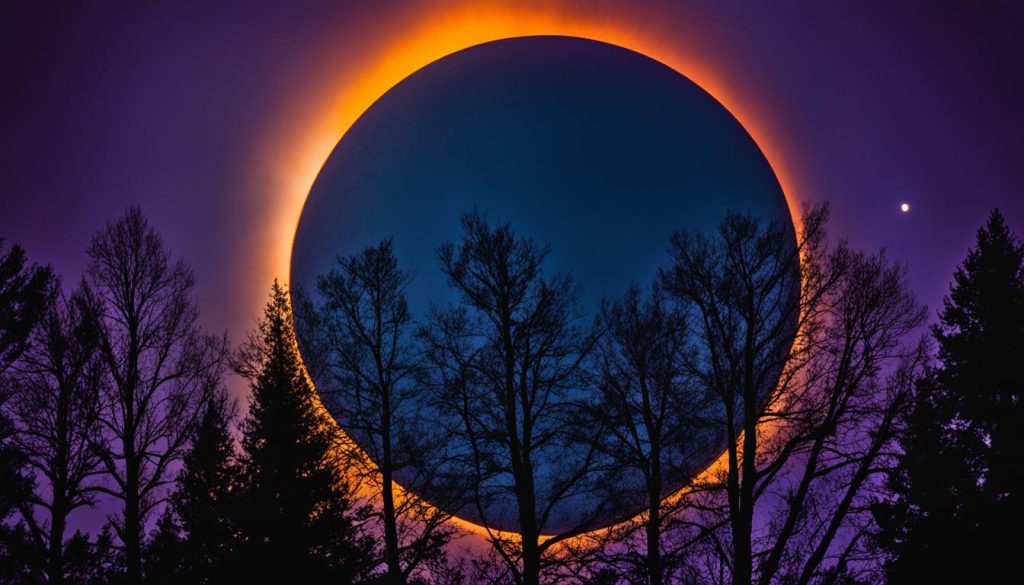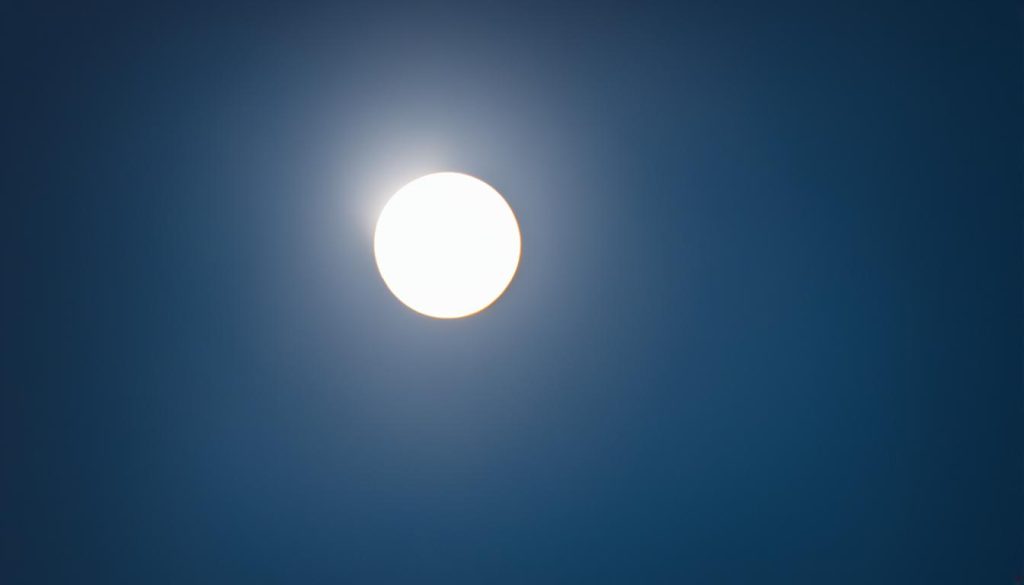On April 8, 2024, a total solar eclipse will unfold across North America, a rare and awe-inspiring celestial event. This phenomenon occurs when the moon perfectly aligns between Earth and the Sun, completely obscuring the Sun’s view and revealing its mesmerizing outer atmosphere known as the “corona”. The last total solar eclipse across the continental United States was in 2017, and the next one won’t happen until 2045, making this a once-in-a-lifetime opportunity for many to witness this cosmic spectacle. The eclipse’s path of totality will commence over the Pacific Ocean, traverse Mexico, and cross into the eastern United States before exiting over Newfoundland, Canada, providing observers across North America a chance to bask in the glory of this natural wonder.

But have you ever wondered what creates the captivating conditions for a total solar eclipse? What hidden secrets does the Sun’s corona hold, and how can we unravel them during this fleeting moment of totality? Join us as we explore the science, significance, and spectacle of this extraordinary celestial event.
Key Takeaways
- A total solar eclipse is a rare and awe-inspiring celestial event that occurs when the moon perfectly aligns between Earth and the Sun, completely obscuring the Sun’s view.
- The last total solar eclipse across the continental United States was in 2017, and the next one won’t happen until 2045, making the 2024 eclipse a once-in-a-lifetime opportunity.
- The eclipse’s path of totality will commence over the Pacific Ocean, traverse Mexico, and cross into the eastern United States before exiting over Newfoundland, Canada, providing a chance for observers across North America to witness this natural wonder.
- The Sun’s mesmerizing outer atmosphere, known as the “corona,” becomes visible during the brief moments of totality, offering a rare glimpse into the Sun’s outer layers.
- This celestial event holds profound significance, both culturally and scientifically, and presents valuable opportunities for astronomical research and discovery.
What is a Total Solar Eclipse?
The celestial alignment of the Earth, moon, and Sun creates the breathtaking phenomenon known as a total solar eclipse. This remarkable event occurs when the moon’s path directly intersects the Sun’s, casting its shadow upon the Earth’s surface and completely obscuring the Sun’s light. The precise sizing and positioning of these celestial bodies allow for this captivating cosmic dance to unfold.
The Celestial Alignment
A total solar eclipse happens when the moon’s apparent size in the sky is large enough to cover the entire disk of the Sun. This perfect celestial alignment is a result of the moon’s distance from the Earth, which allows it to precisely block the Sun’s light from reaching our planet. As the moon slides between the Earth and the Sun, it casts a long, narrow shadow that sweeps across the Earth’s surface, creating the path of totality where the Sun is completely obscured.
The Moon’s Shadow on Earth
Within the path of totality, the moon’s shadow transforms the landscape into a realm of eerie darkness, as the Sun’s light is entirely extinguished. During this brief period of totality, which can last up to a few minutes, the world around the observer is bathed in an otherworldly glow, with the horizon taking on a distinctive reddish hue. This dramatic shift in lighting and atmosphere is a testament to the sheer scale and power of the celestial event unfolding overhead.
The Breathtaking Corona
As the moon fully obscures the Sun’s surface, the Sun’s outer atmosphere, known as the corona, becomes visible. This breathtaking spectacle appears as a shimmering halo of light surrounding the darkened Sun, offering a rare glimpse into the Sun’s most elusive and enigmatic layers. The corona’s ethereal and mesmerizing appearance has captivated observers for centuries, making a total solar eclipse a truly awe-inspiring and unforgettable celestial experience.
When and Where to See the 2024 Total Solar Eclipse
The 2024 total solar eclipse will captivate observers across a vast expanse of North America, with the path of totality stretching from the Pacific coast of Mexico to the Atlantic coast of Newfoundland, Canada. This celestial phenomenon will commence over the open waters of the Pacific Ocean before making landfall in Mexico, where the first glimpse of the moon’s complete obscuration of the sun will be visible.
The Eclipse Path Across North America
As the moon’s shadow sweeps eastward, it will traverse several U.S. states, including Texas, Oklahoma, Arkansas, Missouri, Illinois, Indiana, Ohio, Pennsylvania, New York, Vermont, New Hampshire, and Maine, offering a mesmerizing display of the total solar eclipse to viewers within the path of totality. The dramatic celestial event will then cross the border into Canada, enchanting audiences in southern Ontario, Quebec, New Brunswick, Prince Edward Island, and Cape Breton.
Mexico’s Pacific Coast to Newfoundland, Canada
The 2024 total solar eclipse will ultimately bid farewell to North America as it exits the continent over the Atlantic coast of Newfoundland, Canada. This expansive path across the continent provides a unique opportunity for millions of people to witness this captivating celestial spectacle, a rare and awe-inspiring phenomenon that will not be seen again in North America until 2045.
Preparing for the Eclipse
As the highly anticipated 2024 total solar eclipse approaches, it’s essential to plan ahead and prepare for this captivating celestial event. Choosing the best eclipse viewing location within the path of totality is a crucial step, as it will ensure an unobstructed view of the eclipse and maximize the duration of the totality phase.
Choosing the Best Viewing Location
When selecting a eclipse viewing location, factors such as accessibility, weather patterns, and availability of amenities should be carefully considered. Opt for sites that offer clear sightlines and minimal obstructions, as well as easy access for both attendees and any necessary equipment. Additionally, research local weather forecasts to increase the chances of experiencing the eclipse under favorable conditions.
Gear and Safety Precautions
Proper safety precautions are vital when observing a solar eclipse, as the intense brightness of the Sun during the partial phases can cause permanent eye damage if viewed without appropriate eye protection. Specialized eclipse viewing gear, such as eclipse glasses, sun filters, and other specialized equipment, are necessary to safely observe the various stages of the eclipse. Invest in these essential tools to ensure a safe and enjoyable viewing experience.
The Science Behind the Eclipse
The total solar eclipse of 2024 is not just a captivating visual spectacle, but also a prime opportunity for scientific observation and discovery. The precise geometry of the celestial alignments between the Earth, moon, and Sun is what creates the conditions for a total solar eclipse, with the moon’s size and distance from Earth allowing it to perfectly block the Sun’s light.
The Geometry of Celestial Alignments
During a total solar eclipse, the moon’s passage directly between the Earth and the Sun results in a precise celestial alignment that casts the moon’s shadow upon the Earth’s surface. This unique geometry is what enables the moon to completely obscure the Sun’s corona, the outer atmosphere that is normally hidden by the Sun’s brilliant light.
Studying the Sun’s Corona
The brief moments of totality, when the moon fully blocks the Sun, provide astronomers and researchers with a rare chance to study the Sun’s elusive corona. This invaluable data can lead to a deeper understanding of the Sun’s structure, dynamics, and the processes that power our nearest star, offering insights into the eclipse science that drives these celestial events.
Eclipse Festivals and Events
As the 2024 total solar eclipse approaches, communities across North America are embracing the occasion with a flurry of eclipse festivals and eclipse events. These captivating celebrations aim to not only provide a platform for the public to witness this celestial spectacle, but also to foster a sense of wonder and excitement about the natural world and the mysteries of the universe.
Community Celebrations
From bustling eclipse community celebrations featuring live music, food vendors, and educational exhibits to guided viewing events led by renowned astronomers, there will be no shortage of opportunities for people to engage with and learn about the 2024 total solar eclipse. Local businesses are also enthusiastically embracing the occasion, offering eclipse-inspired merchandise and eclipse-themed culinary delights to create a truly festive atmosphere.
Educational Exhibits and Activities
These community-driven eclipse events not only allow people to witness the eclipse, but also serve as platforms for eclipse education. Visitors can explore interactive displays, attend lectures by experts, and participate in hands-on activities that delve into the science behind this celestial phenomenon. By fostering a deeper understanding and appreciation for the eclipse, these events help to ignite a sense of wonder and curiosity about the natural world, inspiring a new generation of stargazers and space enthusiasts.
Partial Eclipse Viewing
While the path of totality will only be visible to those within the narrow corridor of the eclipse’s shadow, the majority of North America will experience a partial eclipse, where the moon takes a “bite” out of the Sun’s disk. Though the Sun will not be fully obscured, it is still essential to use proper eye protection, such as specialized eclipse glasses or solar filters, when observing the partial phases of the eclipse.
Safe Viewing Techniques
This will allow observers to safely witness the mesmerizing transformation of the Sun into a crescent shape as the moon gradually covers its surface. For those outside the path of totality, the partial eclipse presents a unique opportunity to engage with this celestial event and appreciate the intricate dance between the Earth, moon, and Sun.
The Crescent Sun
As the moon slowly moves across the face of the Sun, the gradual darkening of the sky and the appearance of the crescent sun can be a captivating sight to behold. By using the proper safety equipment, you can safely observe this celestial phenomenon and witness the dramatic changes in the Sun’s appearance during the partial eclipse.

eclipse
The eclipse is a captivating celestial phenomenon that has captivated the human imagination for centuries. As the solar eclipse approaches in 2024, North America will be treated to a rare and awe-inspiring display of nature’s cosmic spectacle. This lunar eclipse will present a unique opportunity for astronomical event enthusiasts to witness the celestial phenomenon of a total eclipse, partial eclipse, or annular eclipse.
The eclipse viewing experience during this eclipse path will be truly unforgettable, as the moon’s precise alignment between the Earth and the Sun creates a captivating visual tapestry. From the path of totality to the captivating glimpse of the Sun’s corona, this eclipse promises to leave a lasting impression on all who have the chance to observe it.
Whether you’re a seasoned eclipse enthusiast or a curious onlooker, the 2024 solar eclipse is a must-see event that will ignite your sense of wonder and deepen your appreciation for the natural world. So, mark your calendars and prepare to witness this extraordinary celestial phenomenon that will be etched in the memories of all who experience it.
The Significance of Solar Eclipses
Solar eclipses have long held a profound significance for human civilizations, both in their cultural and historical perspectives, as well as their impact on astronomical discoveries. Throughout history, these celestial events have been imbued with spiritual and symbolic meaning, with various cultures interpreting them as omens, divine manifestations, or sources of awe and reverence.
Cultural and Historical Perspectives
From ancient Mesopotamian and Chinese astronomers to the indigenous tribes of North America, solar eclipses have been revered as significant occurrences, often associated with the balance of cosmic forces or the temporary triumph of darkness over light. The ability to predict and observe these phenomena has been a hallmark of astronomical advancement, as civilizations have used them to better understand the mechanics of the solar system and the nature of our nearest star.
Astronomical Discoveries
The 2024 total solar eclipse will undoubtedly continue this legacy, inspiring a renewed sense of wonder and curiosity about the cosmos. This celestial event will provide valuable opportunities for scientific research and discovery, as astronomers and researchers seize the chance to study the Sun’s elusive corona and unravel the mysteries of our solar system. By observing the intricate dance between the Earth, moon, and Sun, the 2024 eclipse will contribute to our ever-evolving understanding of the universe and the natural world that surrounds us.

Photography and Videography Tips
The 2024 total solar eclipse presents a unique opportunity for both amateur and professional eclipse photography and eclipse videography enthusiasts to capture the event in all its splendor. Specialized eclipse equipment, such as telephoto lenses, solar filters, and tripods, is essential for obtaining high-quality footage and images that can effectively convey the drama and beauty of the eclipse.
Equipment and Settings
To ensure that the eclipse sequence is documented with precision, photographers and videographers must carefully select their gear and optimize camera settings. Telephoto lenses, ranging from 200mm to 600mm, can bring the Sun and moon into sharp focus, while solar filters protect the camera sensor from the intense brightness of the partial eclipse phases. Tripods are crucial for stabilizing the camera and preventing blur, especially during the moments of totality when the shutter speed must be slowed to capture the Sun’s corona.
Capturing the Eclipse Sequence
Understanding the various stages of the eclipse sequence, from the initial partial phases to the dramatic moment of totality, is crucial for ensuring that the visually stunning transformation of the Sun is documented with precision. Experienced eclipse photographers and videographers will plan their shots in advance, anticipating the changes in the sun’s appearance and positioning their equipment accordingly. By capturing the eclipse’s progression, from the first bite of the moon to the awe-inspiring reveal of the Sun’s corona, eclipse enthusiasts can create lasting memories and contribute to the visual record of this cosmic spectacle.
Conclusion
The total solar eclipse of 2024 promises to be a once-in-a-lifetime event that will captivate audiences across North America. From the dramatic sweep of the moon’s shadow across the continent to the mesmerizing reveal of the Sun’s corona during the brief moments of totality, this celestial spectacle will undoubtedly inspire awe and wonder in all who witness it.
Whether you plan to travel to the path of totality or observe the partial eclipse from your own backyard, the 2024 total solar eclipse is an opportunity to connect with the natural world, delve into the mysteries of the cosmos, and celebrate the enduring fascination that humanity has with the rhythms of the heavens. Don’t miss your chance to be a part of this extraordinary celestial event that will leave a lasting impression on all who experience it.
This once-in-a-generation total solar eclipse across North America in 2024 will captivate the region, offering a chance to witness the moon’s shadow sweep across the continent and the Sun’s corona emerge during the brief moments of totality. Whether you travel to the path of totality or observe the partial eclipse from your local vantage point, this celestial event promises to inspire wonder and deepen our connection to the natural world and the mysteries of the universe.

